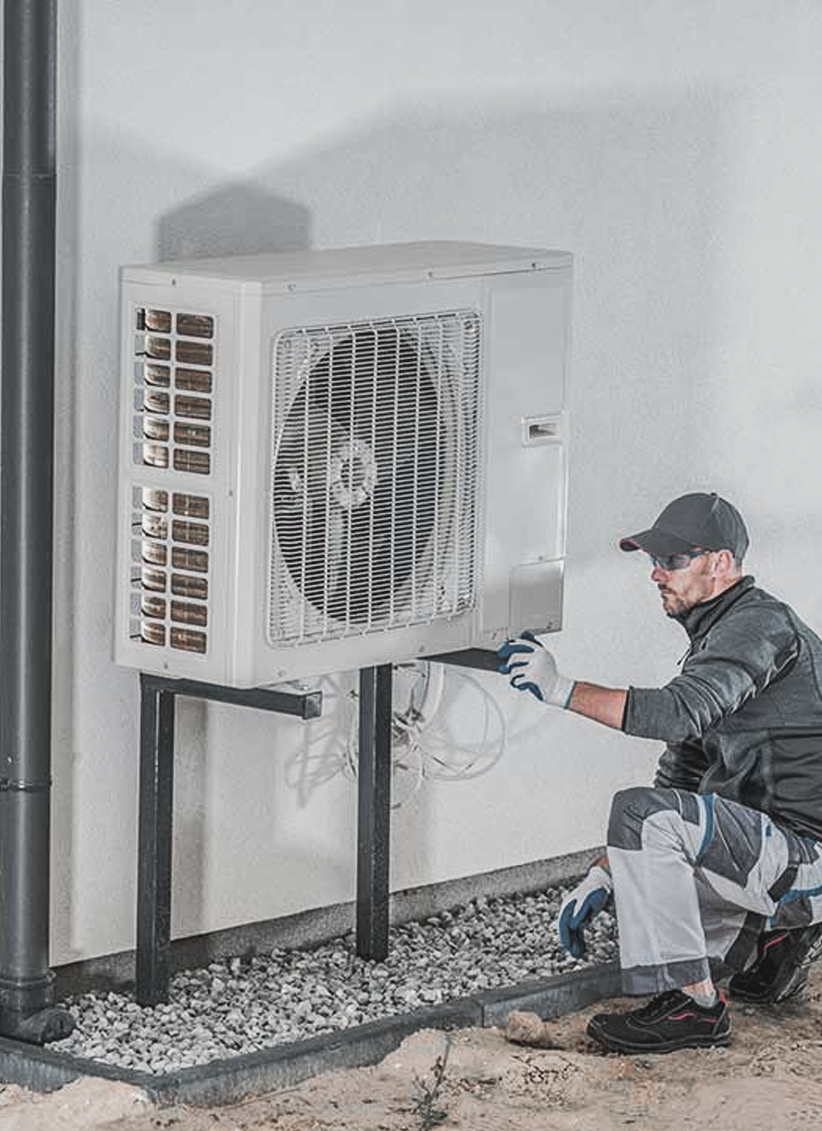FAQ
Documentation and forms
Competency and qualification requirements
Certification rules
Additional capabilities
Appeals and complaints
Accreditation
Contact information
Certification of personnel to make inseparable connections, also known as brazing, is essential to ensure the safety and quality of connections in a variety of industrial and craft applications. The brazing process requires not only precise technical skills, but also knowledge of the relevant standards and procedures to ensure the durability and reliability of connections.
brazing certification training courses are designed to ensure that participants gain the necessary competencies to make inseparable connections in accordance with current industry standards and requirements.
Personnel making inseparable connections - solderers, performing work using brazing methods, are subject to a certification process in accordance with the requirements of PN-EN ISO 13585:2012 "Brazing - Qualification of brazers and brazing operators".
What does a brazers do and what requirements must he meet?
Brazing is an extremely important process in industry, enabling the permanent joining of structural elements made of steel, non-ferrous metals, and their alloys. This process involves heating the joined elements above the melting point of the solder, which then fills the spaces between them, creating a solid and durable connection. It is widely used in various industrial sectors such as chemical, petrochemical, electrical, and automotive industries, where not only durable bonding is crucial but also the preservation of the physical and chemical properties of materials.
Role of a Brazer:
A solderer, responsible for creating permanent joints, must possess specific qualifications and skills. Knowledge of various soldering techniques and the properties of the materials being joined is crucial. In addition to precise execution of the soldering process, the solderer is responsible for preparing the joint surfaces, including cleaning and accurately fitting the elements. Control of soldering parameters is essential to ensure the durability and safety of the joint.
Requirements and Certification:
Qualification requirements for solderers are particularly significant for applications in pressure devices, where joints must meet stringent safety and durability standards. Therefore, the certification process for solderers according to PN-EN ISO 13585:2012 is essential. It ensures that personnel performing brazing are adequately trained and competent to work according to the highest standards of quality and safety.
What regulations govern the certification of solderer competency?
Regulations Governing Brazer Certification
Our accredited certification program, developed according to best practices, adheres to specific regulations outlined in several documents and standards. These include:
PN-EN ISO 13585:2012 – This standard pertains to hard brazing, detailing the qualification of brazers and operators involved in hard soldering processes. It defines the requirements for knowledge, skills, and experience necessary to effectively and safely perform hard brazing operations.
PN-EN 12799:2003 – This standard covers general principles of brazing technique, along with requirements for materials, tools, and techniques used during brazing. It provides fundamental guidelines for safety and quality in brazered joints.
PN-EN ISO/IEC 17024:2012 – This standard outlines general requirements for bodies certifying individuals. It establishes accreditation criteria for certifying bodies, ensuring that the certification process is conducted in accordance with the highest standards of quality and objectivity.
Additionally, Centralny Ośrodek Chłodnictwa “COCH” in Kraków has extensive experience in training and certification, integral to our certification program. COCH provides high-quality training and professional certification, fully tailored to the needs and requirements of the brazing industry.
Through adherence to these standards and leveraging COCH’s experience, we ensure that our certified brazers possess not only the necessary theoretical knowledge but also practical skills to perform effective and safe hard brazing, meeting the highest standards of quality and safety.
What does the certification procedure cover?
Our Brazers Certification Program
Our brazers certification program, based on PN-EN ISO 13585:2012 “Hard Soldering – Qualification of Brazers and Operators of Hard brazing,” includes the following stages:
Qualification and Experience Verification: Candidates must meet educational and experience requirements in brazing, particularly in hard brazing of steel, copper, and their alloys.
Theoretical Training: Participants undergo theoretical training to prepare for a written exam according to PN-EN ISO 13585:2012.
Practical Training: Following theoretical training, candidates acquire practical soldering skills, including equipment operation and application of appropriate techniques.
Theoretical Exam: A written exam assesses candidates’ knowledge of PN-EN ISO 13585:2012 requirements and methods for brazing steel and copper (methods designated as 912 according to PN-EN ISO 4063:2011).
Practical Exam: Candidates undergo a practical exam evaluating their skills in applying soldering techniques according to the standard.
Assessment and Certification: Upon successful completion of both exams, candidates receive a certificate confirming their competence in hard brazing according to PN-EN ISO 13585:2012.
Through this process, we ensure that certified brazeres possess the necessary qualifications and skills to perform hard brazing in compliance with international standards of quality and safety.
Detailed information about the certification process
Competency and qualification requirements
Here are the competency and qualification requirements for individuals applying for certification in performing non-destructive connections, according to our certification program:
- Physical Aptitude: Candidates should possess specific physical attributes including good vision, color recognition, tactile sensitivity, fine eye-hand coordination, and physical dexterity. These characteristics are essential for performing tasks related to non-destructive connection processes, depending on the brazing method.
- Age Requirements: Candidates must be at least 18 years old.
- Training in Non-Destructive Connections: Applicants must provide a certificate of completion from an appropriate training program in non-destructive connections that aligns with the desired certification. An exception applies for recertification situations.
- Medical Certificate: Candidates must present a current medical certificate confirming their fitness for performing tasks within the scope of the applied certification, specifically for non-destructive connection tasks.
Ensuring compliance with these requirements is crucial to maintaining safety, effectiveness, and quality in the soldering process, as well as meeting certification standards.

Certification rules
The certification rules for personnel performing non-destructive connections, as detailed in our certification program, encompass the following stages:
Application Submission: The candidate submits an application for certification to the Personnel Certification Body.
Registration and Application Evaluation: The candidate’s application is registered and undergoes a thorough evaluation for completeness and compliance with requirements.
Knowledge Assessment (Theoretical Exam) and Practical Skills Assessment (Practical Exam): The candidate undergoes a theoretical exam to assess their theoretical knowledge related to non-destructive connection processes. Additionally, they undergo a practical exam where they demonstrate their practical skills.
Performance of Tests and Laboratory Examinations: In some cases, specialized tests and laboratory examinations may be required to confirm the candidate’s ability to perform non-destructive connections.
Certification Decision: Based on the assessment results of the application, exams, and any necessary tests, a decision is made regarding certification.
Issuance of Certificate: Upon a positive decision, the candidate is issued a certificate confirming their qualifications to perform non-destructive connections in accordance with specified requirements.
Supervision of Certificate Holder: The certifying body oversees the certificate holder, monitoring their activities to ensure they maintain the required standards.
Recertification: The certificate has a specified validity period. Upon expiration, the certificate holder may apply for recertification, which involves meeting specific conditions and possibly undergoing additional tests or training.
These stages ensure a comprehensive approach to certification aimed at ensuring high quality and safety in the performance of non-destructive connections, in compliance with the requirements of Directive 2014/68/EU (PED).
Appeals and Complaints
Information on the procedure for handling complaints and appeals can be found at this link.
Additional capabilities

Soldering in refrigeration method 912 - training course
Go to the training page

Certification of refrigeration competence
See what certification opportunities you have in the refrigeration area
Why Choose COCH Certification?
We invite you to discover the world of brazing - a key process in the industry that provides permanent and irreversible connections of structural components and technological installations.
Accreditation
Quality accreditation - a guarantee of trust
The Certification Department is accredited AC 036 and AC 056 by the Polish Accreditation Center and specializes in the certification of refrigeration destination products and personnel competence in the field of refrigeration.
Our team consists of qualified and experienced specialists who offer comprehensive assistance in the certification preparation and certification process, supervision and personnel competence development. With our services, we provide customers with reliable and professional service at every stage of cooperation.





















































